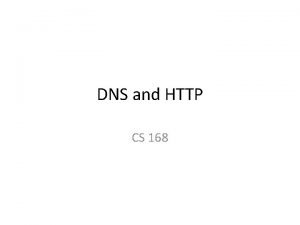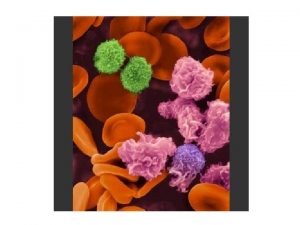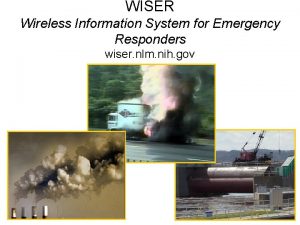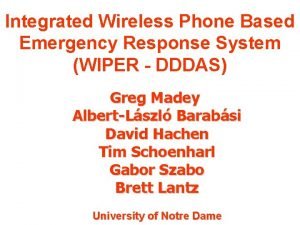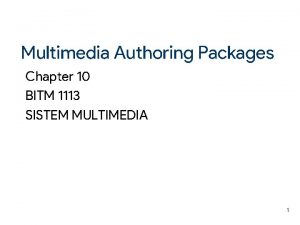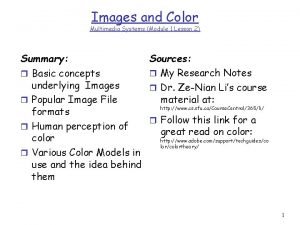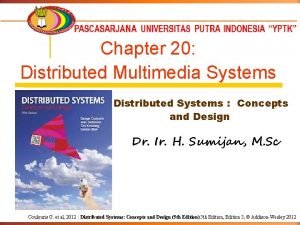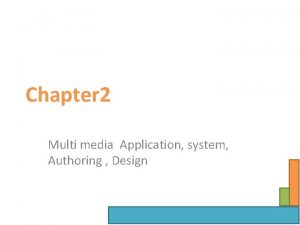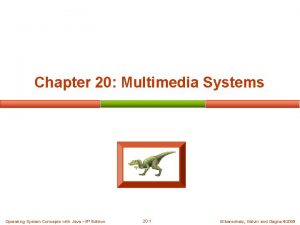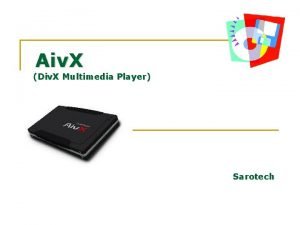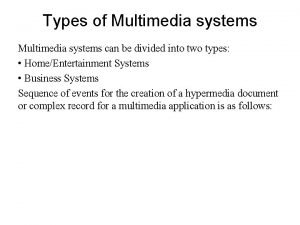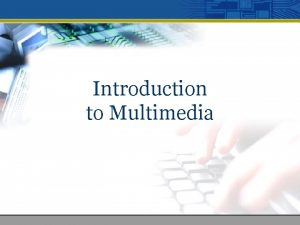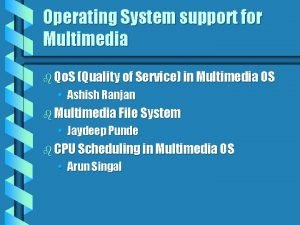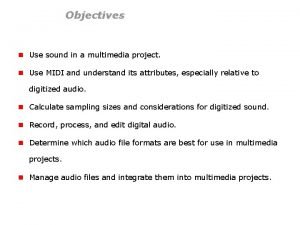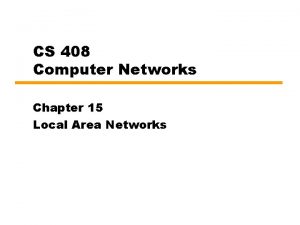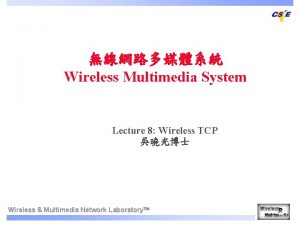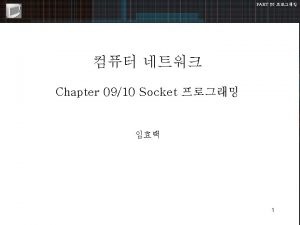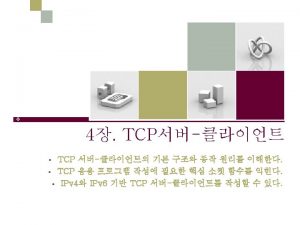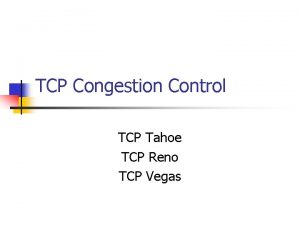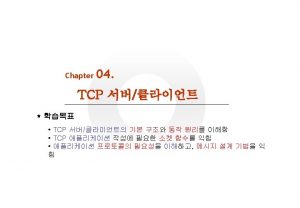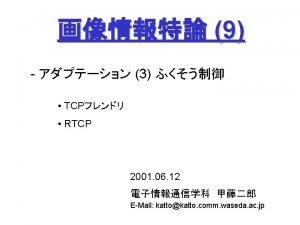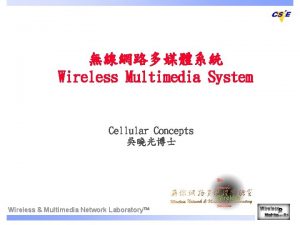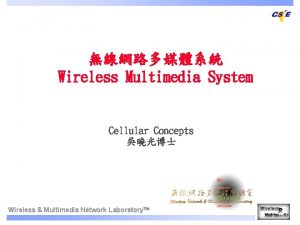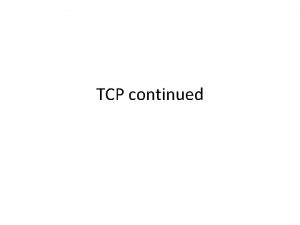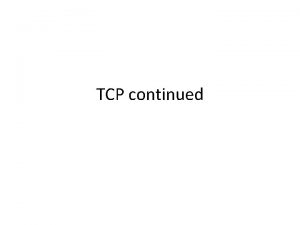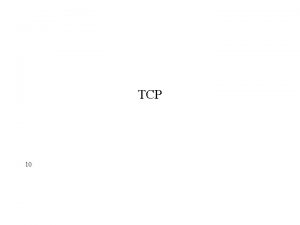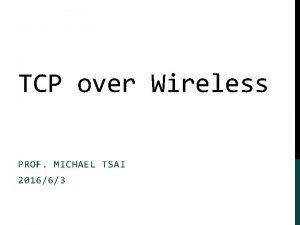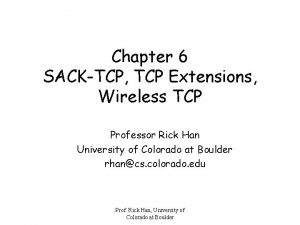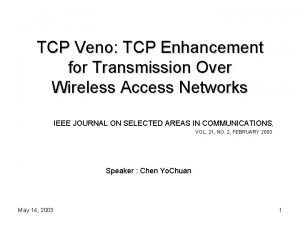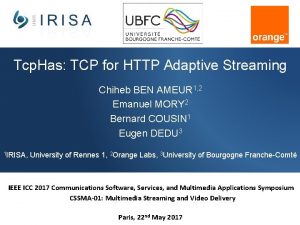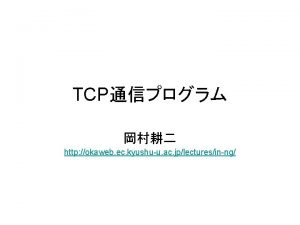Wireless Multimedia System Lecture 8 Wireless TCP http


![Reading w [Balakrishnan 95], Harri Balakrishnan, Srinivasan Seshan, Elan Amir and Randy H. Katz, Reading w [Balakrishnan 95], Harri Balakrishnan, Srinivasan Seshan, Elan Amir and Randy H. Katz,](https://slidetodoc.com/presentation_image_h/279286dda00396039e8983883142d53a/image-3.jpg)






























![Main Conclusions of [Balakrishnan 97] w Simple link layers do not quite work • Main Conclusions of [Balakrishnan 97] w Simple link layers do not quite work •](https://slidetodoc.com/presentation_image_h/279286dda00396039e8983883142d53a/image-34.jpg)


- Slides: 36

無線網路多媒體系統 Wireless Multimedia System Lecture 8: Wireless TCP 吳曉光博士 http: //inrg. csie. ntu. edu. tw/wms Wireless & Multimedia Network Laboratory

Agenda w Basic TCP w Impact of Mobility & Wireless on TCP performances w Solutions for Wireless TCP w Midterm (next week) Wireless & Multimedia Network Laboratory
![Reading w Balakrishnan 95 Harri Balakrishnan Srinivasan Seshan Elan Amir and Randy H Katz Reading w [Balakrishnan 95], Harri Balakrishnan, Srinivasan Seshan, Elan Amir and Randy H. Katz,](https://slidetodoc.com/presentation_image_h/279286dda00396039e8983883142d53a/image-3.jpg)
Reading w [Balakrishnan 95], Harri Balakrishnan, Srinivasan Seshan, Elan Amir and Randy H. Katz, “Improving TCP/IP Performance over Wireless Networks”, ACM Mobicom 95 w [Balarkrishnan 97], Harri Balarkrishna, Venkat N, Padmanabhan, Srinivasan Seshan and Randy Katz, “A Comparison of Mechanisms for Improving TCP Performance over Wireless Links”, IEEE JSAC 97. w Reference: [Mario 2001], Saverio Mascolo, Claudio Casetti, Mario Gerla, Renwang“TCP Westwood: Bandwidth Estimation for Enhanced Transport over Wireless Links”, Mobicom 2001 Wireless & Multimedia Network Laboratory

Mobility in Wireless LANs: Basestation as Bridges Ethernet 128. 97. 92 Bridge Ethernet 128. 97. 92. 72 128. 97. 92. 5 Router 128. 97. 84. 1 128. 97. 92. 68 Fails! 128. 97. 92. 68? ? w w Basestations are bridges(layer 2) – i. e. they relay MAC frames • Smart bridges avoid wasted bandwidth Works the within an ethernet(or other broadcast LAN) • Fails across network boundaries, and in switched LANs(e. g. ATM) Wireless & Multimedia Network Laboratory Ethernet 128. 97. 84

Qo. S and Multimedia Traffic Support Application OS, Middle. Ware RTP, TCP, UDP Adaptive Algorithm by Qo. S Requirement RSVP IP, Mobile IP Wireless Network Layer Clustering(optional) Data Link MAC Radio Wireless & Multimedia Network Laboratory Mobility Unpredictable channel by Qo. S Information

Background w w With the growth of wireless device, wireless network access will become popular, but… Import the protocol from the wire network to wireless network… Packet losses occur in wireless due to the lossy links, not network congestion In traditional TCP, it can not distinguish the difference between that lossy link and network congestion Wireless & Multimedia Network Laboratory

Characteristics of Wireless & Mobility w Limited Bandwidth • Small frame sizes (MTU) to keep latency small w High bit error rates • Small frame sized to keep packet loss probability small w Time varying bit error rate • Fading, frequency collisions etc. w Qo. S (loss rate, delay) degradation during hand-off • • Due to network layer rerouting Due to link layer procedures w Qo. S degradation after hand-offs • • Lack of resource at new basestation Less optimal route Wireless & Multimedia Network Laboratory

Basic End-to-End Control (Transport) Wireless & Multimedia Network Laboratory

Typical loss situation Wireless & Multimedia Network Laboratory

UDP (Connectionless, Unreliable) Possible Multicast, Real Time Traffic, TCP-Friendly Wireless & Multimedia Network Laboratory

Impact on Connectionless, Unreliable Transport Protocol w Example: effect on UDP applications w Increase in end-to-end packet losses • • Error on wireless link Packet loss during hand-offs w Drop in application throughput • • Errors on wireless link Packet loss during hand-off w Pauses in interactive applications • • • Burst errors on wireless link Packet loss during hand-off Delay increase due to buffering & re-sequencing during hand-offs w Application level impact is much more complex! Wireless & Multimedia Network Laboratory

TCP (Connection Oriented, Reliable) Data Transmission, WWW, flow control, error control Wireless & Multimedia Network Laboratory

TCP Basics w Sliding window protocol: Go-Back N ARQ • • w s Window is max number of outstanding un. ACK’ed bytes in network Cumulative acknowledgement scheme (original TCP) • • w Ack’s all bytes up through n Piggybacked on data packets in reverse direction Control of sender’s window size • • w Transfers a byte stream in “segments”, not fixed user blocks, logical timer associated with each segment that is sent 32 -bit sequence number indicated byte number in stream Min (receiver’s advertized window, congestion window) Three goals s Flow control to avoid receiver buffer overflow s Congestion control to react to congestion in network layer & below s Congestion avoidance Segment loss is assumed to be a result of congestion in routers • Reasonable for wired network since BER on fiber is better than 10 -12 Wireless & Multimedia Network Laboratory

TCP’s End to End Congestion Control w Window-based congestion control • • Cwnd: congestion window size Ssthresh: slow start threshold (for slow down of increase) w Timeout is an indicator of segment loss w Timeout value • Using estimated average of ACK delay and expected deviation w On timeout • • Segment is assumed lost and is attributed to congestion One-half of current window Is recorded in ssthresh Cwd is reduced to 1 Timeout value is increased in case packet was delayed Wireless & Multimedia Network Laboratory

TCP’s End-to-end Congestion Control w On new ACK • • Everything okay, so allow larger congestion window Two ways of increasing cwnd s Phase 1: slow start until cwnd <= ssthresh – Fast (exponential) increase of cwd s Phase 2: congestion avoidance – Slow (additive) increase of cwnd w Duplicate ACKs • • • Two causes: lost segment, misordered segment >=3 duplicate ACKs in a row are a good indication of a lost segment but data is still flowing Fast Retransmit and Fast Recovery s s s Missing segment is retransmitted without waiting for timeout One half of current window is recorded in ssthresh Congestion avoidance is done but not slow start Wireless & Multimedia Network Laboratory

Challenges of Mobility and Wireless on Network Performance TCP Performance Wireless & Multimedia Network Laboratory

The Problem w In Wireless and mobile networks, segment loss is likely not due to congestion • • Packet corruption due to high BER on wireless link (noise, fading) Packet delay and losses during handoffs w But, TCP invokes congestion control nevertheless w Mistaking wireless errors and handoffs for congestion causes • • Significant reductions in throughput (window size decreases, slow start) Unacceptable delays (low resolution TCP times ~500 ms, back-off) Packet loss due to congestion FH Packet loss due to corruption and handoffs, excessive Delay due to handoffs BS Wireless & Multimedia Network Laboratory MH

Example graph cwin<=ssthresh slow start cwin>ssthresh congestion avoidance Wireless & Multimedia Network Laboratory

Slow Start of TCP Reno window w w’ ssthreshold w/2 w’/2 time SS timeout AIMD ssthreshold : slow-start threshold Wireless & Multimedia Network Laboratory

Congestion Avoidance of TCP Reno window TDACK time SS CA SS: slow start CA: congestion avoidance Wireless & Multimedia Network Laboratory Fast retransmission / Fast recovery

Fixes? w w Fix TCP • • TCP really a hack in many ways. . • Move away from cumulative ACK Fix lower layer to make TCP work better • w Separate congestion control from error control Improve the wireless link Use something different • • Something totally new Something different for the wireless part Wireless & Multimedia Network Laboratory

Normal TCP Wireless & Multimedia Network Laboratory

Fast-Retransmit Scheme Wireless & Multimedia Network Laboratory

Solutions for WTCP (I) Split the connection into two parts Wireless & Multimedia Network Laboratory

Split Connection Approaches w Main Idea: split MH ↔ FH connection into two MH ↔ BS & BS ↔ FH • • • Separate flow control and reliable delivery mechanisms Intermediate higher layer agent at the base-station Session layer hides the split connection w Two approaches: • Both FH ↔ BS & BS ↔ MH segments use TCP: Rutger’s Indirect-TCP s • e. g. uses MTCP (Multiple TCP) over BS ↔ MH BS ↔MH uses specialized protocol s s e. g. uses SRP (Selective Repeat) over BS ↔MH Error and flow control optimized for lossy wireless link Wireless & Multimedia Network Laboratory

Pros & Cons of Split-Connection Approaches w Pros • • • FH is shielded from wireless link behavior Handoff is transparent to FH Relative easy to implement Requires no modification to FH Can use specialized protocol over wireless link w Cons • • Loss of end-to-end semantics Application relink with new library Software overhead: efficiency and latency Large handoff latency Wireless & Multimedia Network Laboratory

Solutions for WTCP (II) Lower layer to make TCP work better Wireless & Multimedia Network Laboratory

Link-level Error Control w FEC and ARQ on wireless link to increase its reliability • Improves performance independent of transport protocol w Disadvantage • Coupling between link level and end-to-end retransmission may lead to degraded performance at high error rates • Does not address the delay and losses due to handoffs Wireless & Multimedia Network Laboratory

Solutions for WTCP (III) Snoop, Make it look like! Wireless & Multimedia Network Laboratory

Snoop TCP w Basic Idea for transfer of data to MH • • • Snoop Module: Modify network layer routing code at BS Cache un-acknowledged TCP data going to MH at BS Perform local retransmissions over wireless link s s • w Shields sender from wireless link s Transient conditions of high BER, temporary disconnection Basic idea for transfer of data from MH • • w Policies to deal with ACKs from MH and timeout Used duplicate ACKs to identify packet losses BS detects missing packets and generated NACKs for MH, expoits SACK option for TCP MH re-sends the packets, requires modifying TCP code at MH Features • • • Speedups of up to x 20 over regular TCP depending on bit error rate Maintain end-to-end semantics Does not address the handoff problem Wireless & Multimedia Network Laboratory

Performance of the Snoop Mechanism Wireless & Multimedia Network Laboratory

Performance of the Snoop Mechanism Wireless & Multimedia Network Laboratory

Comparison of Wireless TCP Techniques w End-to-End proposals • Selective ACKs s • Allows sender to recover from multiple packet losses without resorting to course timeout Explicit Loss Notification (ELN) s Allow sender to distinguish between congestion vs. other losses w Split-connection proposal • Separate reliable connection between BS & MH s May use standard TCP or, special techniques such as SACK, or NACK w Link-layer proposal • • Hide link-layer losses via general local retransmission and FEC Make link-layer TCP aware s Snoop agent to suppress duplicate ACKs Wireless & Multimedia Network Laboratory
![Main Conclusions of Balakrishnan 97 w Simple link layers do not quite work Main Conclusions of [Balakrishnan 97] w Simple link layers do not quite work •](https://slidetodoc.com/presentation_image_h/279286dda00396039e8983883142d53a/image-34.jpg)
Main Conclusions of [Balakrishnan 97] w Simple link layers do not quite work • • Adverse interaction of times is actually a minor problem Fast retransmission and associated congestion control gets triggered and cause performance loss w Reliable link layer with TCP knowledge works well • Shielding sender from duplicate ACKs due to wireless losses improves throughput by 10 -30% w No need to split end-to-end connections • • I-TCP does as bad because sender stalls due to buffer space limit at BS Using SAK or BS-MH link works well w SACK and ELN helps significantly • • • Help avoid timeous e. g. ELN helped throughput by x 2 over vanilla TCP-Reno But still do 15% to 35% worse than TCP-aware link layer schemes Wireless & Multimedia Network Laboratory

Introduction w TCP Westwood (TCPW) is a sender-side modification of TCP Reno in wire as well as wireless network w TCPW can estimate the E 2 E b/w and the improvement is most significant in wireless network with lossy links w w TCPW sender monitors the ACK reception and from it estimates the data rate The sender uses the b/w estimate to properly set the cwin and ssthresh Wireless & Multimedia Network Laboratory

Filtering the ACK reception rate w Sample of bandwidth w We employ a low-pass filter to average sampled measurements Wireless & Multimedia Network Laboratory
 Itcp in mobile computing
Itcp in mobile computing 01:640:244 lecture notes - lecture 15: plat, idah, farad
01:640:244 lecture notes - lecture 15: plat, idah, farad Cs168 berkeley
Cs168 berkeley Telecommunications, the internet, and wireless technology
Telecommunications, the internet, and wireless technology Multimedia becomes interactive multimedia when
Multimedia becomes interactive multimedia when Disadvantages of linear multimedia
Disadvantages of linear multimedia Multimedia becomes interactive multimedia when
Multimedia becomes interactive multimedia when Esa multimedia.esa.int./multimedia/virtual-tour-iss
Esa multimedia.esa.int./multimedia/virtual-tour-iss Http //mbs.meb.gov.tr/ http //www.alantercihleri.com
Http //mbs.meb.gov.tr/ http //www.alantercihleri.com Http //pelatihan tik.ung.ac.id
Http //pelatihan tik.ung.ac.id Power system dynamics and stability lecture notes
Power system dynamics and stability lecture notes Operating system lecture notes
Operating system lecture notes Power system analysis lecture notes
Power system analysis lecture notes Healthmis.ng
Healthmis.ng Lymphatic
Lymphatic Power system dynamics and stability lecture notes
Power system dynamics and stability lecture notes Wireless geolocation system
Wireless geolocation system Dpwcs
Dpwcs Wireless intrusion prevention
Wireless intrusion prevention Wireless information system for emergency responders
Wireless information system for emergency responders Wireless response system
Wireless response system Multimedia management system
Multimedia management system Multimedia authoring system
Multimedia authoring system Introduction of multimedia
Introduction of multimedia Multimedia system images
Multimedia system images Features of multimedia authoring tools
Features of multimedia authoring tools Distributed multimedia system
Distributed multimedia system Designer released multimedia authoring system
Designer released multimedia authoring system Multimedia operating system
Multimedia operating system X multimedia system
X multimedia system Multimedia objects can be classified into 2 categories
Multimedia objects can be classified into 2 categories Multimedia definition in computer
Multimedia definition in computer Multimedia operating system
Multimedia operating system Sound in multimedia
Sound in multimedia What is a multimedia system? cs408
What is a multimedia system? cs408 Kids health digestive system
Kids health digestive system Http://system.windows.media/
Http://system.windows.media/


